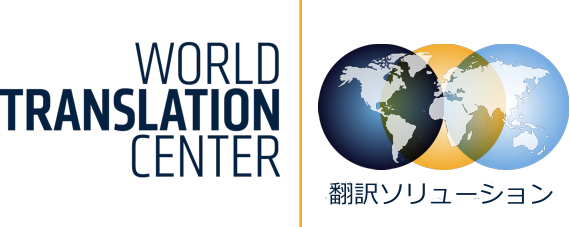WORLD TRANSLATION CENTERは、世界中の専門翻訳者による翻訳と音声録音サービスを提供する大手翻訳会社です。
Articles and Stories
Six Myths About Translation
1. Translation is a small, niche market. The global market for outsourced language services is worth more than US$33 billion in 2012 . The largest segment of the market is written translation, followed by on-site interpreting and software localization. The vast majority of these translation services are provided by small agencies — there are more than 26,000 of them throughout the world. These companies coordinate translation projects in multiple languages simultaneously, often involving many different file types, service providers and translators around the world.
2. The need for translation is fading away. The U.S. Bureau of Labor Statistics estimates that there will be 83,000 jobs for interpreters and translators by 2020 in the United States alone. This job market is expected to grow by 42 percent from 2010 to 2020, significantly higher than the average of 14 percent for all professions1.
3. Any person speaking two languages can be a translator or interpreter. Most translators and interpreters have advanced degrees and training in either translation, linguistics, or a specialty field. Also, professional certifications are widely recognized and strongly encouraged. In the U.S., translators are certified by the American Translators Association, and a variety of certifications exist for interpreters.
4. Interpreters and translators are interchangeable. Translators and interpreters have very different skill sets. Translation refers to files such as documents, videos, or any software, while interpreting refers to the spoken language. Translators must be good and fast at converting a word into writing in a different language, often times they are proficient with computer-assisted translation tools and terminology databases. Good interpreters on the other hand, have strong short-term memory and note-taking skills and can memorize specialized terminology for instant recall.
5. Machine translation will take over human translation. Even though translation software is highly perfected and available at a reasonable cost, a human is still necessary to use it and make the final translation meaningful and correct in the translated message. Quick and fast online auto-translations might work for checking the meaning of a phrase or line, but for a longer document they produce confusing and partly incorrect translations.
6. In the future, all translation will be free. Considering that the translation industry does not only rely on translators and interpreters, but also on countless other professionals such as project managers, account managers, vendor managers, desktop publishing professionals, engineers and IT people and that the demand for translation is outpacing supply — professional translations will always have to be provided at a cost. Translation is an essential part of a much larger economic picture, one that reflects the global aspect of our world and allows for all its players to communicate with each other.
1 Kelly, Nataly, Clearing Up the Top 10 Myths About Translation, Huffington Post, June 13, 2012







